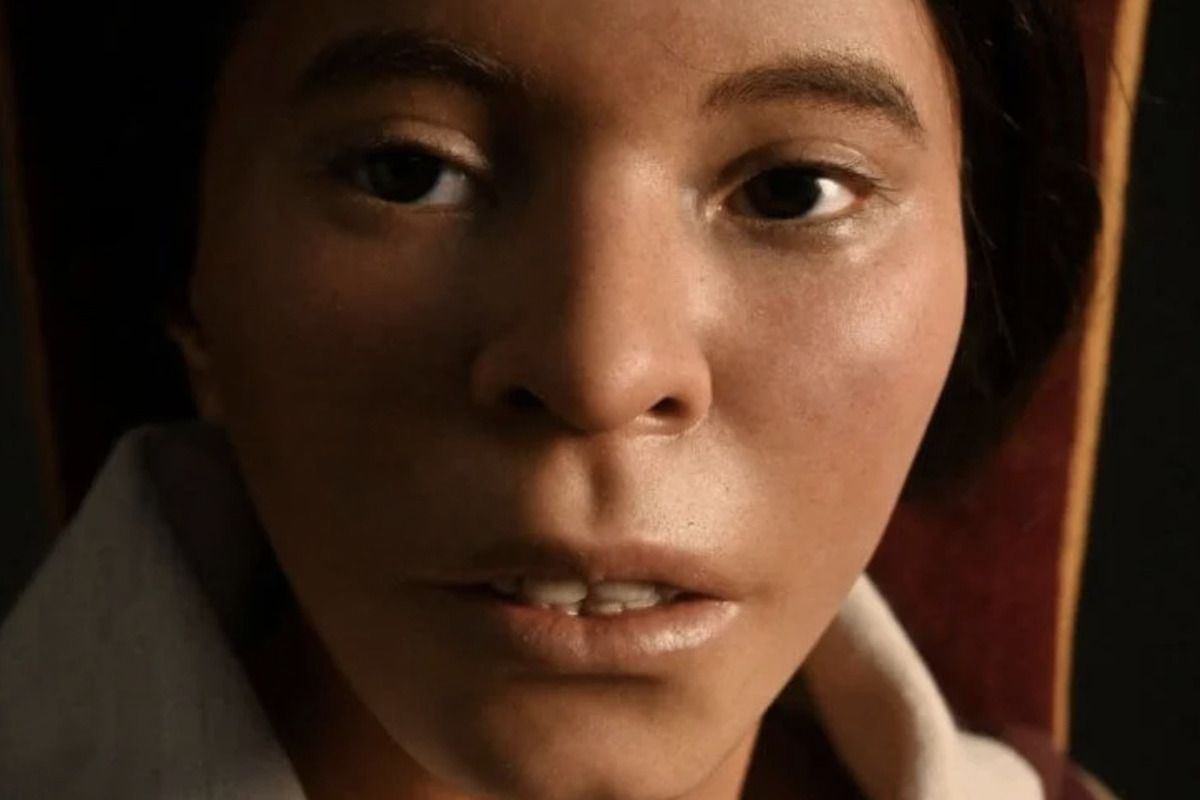Scientists have reconstructed the face of the frozen mummy of a Native American girl
[ad_1]

Five hundred years ago, a teenage Inca girl was sacrificed and buried near the summit of Ampato, a dormant volcano in the Andes. Since the discovery of her incredibly well-preserved frozen remains in 1995, she has become known by many names—“The Ice Maiden,” Juanita, and Lady Ampato—but little has been known about who or what she really was.
According to CNN, Swedish artist Oscar Nilsson and a team of researchers from the Center for Andean Studies at the University of Warsaw and the Catholic University of Santa Maria collaborated to create a 3D reconstruction of Juanita’s face.
The reconstruction was part of an exhibition at the Museum of Andean Sanctuaries in Peru entitled “Capacocha, Following the Incan Deities.” The exhibition presents the latest research on Juanita and her life, as well as finds from other Inca mummies discovered on the peaks of the Peruvian Andes.
“For many years, mummies were treated like museum pieces,” says Dr Dagmara Socha, a bioarchaeologist at the Center for Andean Studies at the University of Warsaw and curator of the exhibition. “By conducting scientific research and facial reconstruction, we want to restore their identity. A well-done reconstruction allows us to show the people behind the story we want to tell.”
The Inca Empire, which lasted from approximately 1200 to 1533, once stretched 4,000 kilometers across what is now Peru and Chile, CNN recalls. According to Dr. Soha, one of the most important Incan rituals was the capacocha, which involved human sacrifice with offerings of prestigious goods such as pottery, precious metals, textiles and sea shells.
According to researchers, rituals were performed to appease deities and sacred sites and protect the community from disasters such as droughts, volcanic eruptions and earthquakes. The peaks of the Andes were considered sacred places, and children and young women, considered beautiful and pure, were chosen for sacrifice rituals. Their sacrifices were believed to bring honor to their parents and bliss in the afterlife.
Once sacrificed, children and young women were considered “mediators” between humans and deities. The children were believed to have been reunited with their ancestors, who were believed to have been watching from the towering peaks of the Andes, the researchers said.
Dr. Johan Reinhard and assistant Miguel Zarate discovered Juanita while climbing Ampato in September 1995. They reached the summit, located 6,312 meters above sea level, only to discover that part of its ridge had collapsed, exposing an Inca burial site and spilling its contents some 70 meters below.
Reinhard and Zarate noticed a bundle of cloth and, picking it up, found themselves looking into the face of the “Ice Maiden”. They carefully lowered Juanita from the mountain, where she remains to this day in a chamber set at minus 20 degrees Celsius in the Museum of Andean Sanctuaries of the Catholic University of Santa Maria, where museum visitors can see her on display.
Research has shown that Juanita was a healthy girl between the ages of 13 and 15 when she died from a blow to the head.
The exhibit features replicas of artifacts buried with the Ice Maiden, and visitors can touch them to feel their weight and texture.
She was buried in ceremonial clothing, along with ceramic objects, gold and silver female figurines, a spondylus shell, food, woven bags and pottery. The pottery was decorated with geometric shapes that are still being studied today and may have been part of the Incan communication system.
In 2018, Dr. Soha and a team of archaeologists and scientists began a five-year project to study Juanita, as well as other remains and objects found on the snow-capped volcanoes of Ampato, Misti and Pichu Pichu.
During their work, the team discovered that some children and women were chewing coca leaves and drinking ayahuasca (a hallucination infusion) in the weeks before their deaths. The findings suggest that hallucinogenic plants and psychotropic stimulants may have been used to reduce death anxiety.
The team performed a CT scan on Juanita in March 2022 and used the results to create a 3D model of her skull that Nilsson could use for his reconstruction.
Tomographic scans of the Ice Maiden’s body and skull were used to create the digital images, combined with research into her age, complexion and other characteristics. Nilsson used tissue depth markers based on measurements of her skull to represent the proportions of her face, including her high cheekbones.
The process of bringing Juanita’s face to life took him six months, and he spent 400 hours working on the model, CNN tells CNN.
Known for his work reconstructing faces from the past, Nilsson used a forensic reconstruction method based on various scientific analyzes to give Juanita the most realistic appearance possible.
“I have a fantastic job, but I also feel a great responsibility to make sure the reconstruction is as accurate as possible,” Nilsson said. – But this is the best job I can imagine. I hope you can meet a person from the past and create an emotional connection to history and its history that is so unique and remarkable.”
The reproduction headdress and shawl she was wearing were naturally dyed and made from alpaca wool by Centro Textiles Tradicionales in Chinchero and Cusco, Peru.
[ad_2]
Source link








